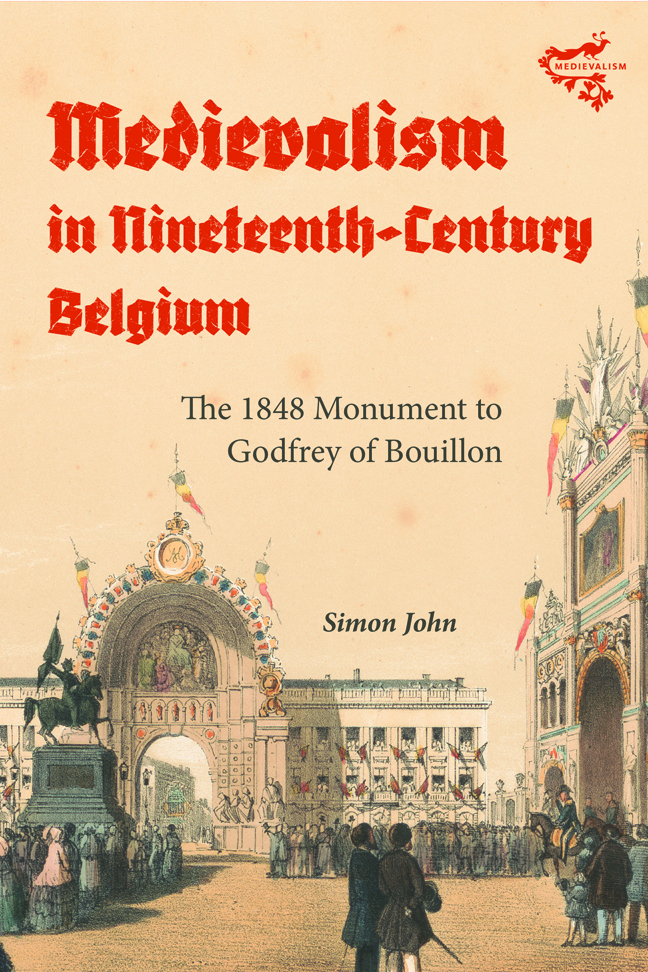Book contents
- Frontmatter
- Contents
- List of Illustrations
- Acknowledgments
- A note on language and names
- List of Abbreviations
- Preface
- Introduction
- 1 State-building, historical culture and public monuments in nineteenth-century Belgium
- 2 The physical setting of the monument: Brussels’ Place Royale
- 3 The creation of the monument
- 4 The changing meanings of the monument
- 5 The monument as a lieu de mémoire I: culture and politics
- 6 The monument as a lieu de mémoire II: history and national identity
- Conclusion
- Bibliography
- Index
- Medievalism
5 - The monument as a lieu de mémoire I: culture and politics
Published online by Cambridge University Press: 09 January 2024
- Frontmatter
- Contents
- List of Illustrations
- Acknowledgments
- A note on language and names
- List of Abbreviations
- Preface
- Introduction
- 1 State-building, historical culture and public monuments in nineteenth-century Belgium
- 2 The physical setting of the monument: Brussels’ Place Royale
- 3 The creation of the monument
- 4 The changing meanings of the monument
- 5 The monument as a lieu de mémoire I: culture and politics
- 6 The monument as a lieu de mémoire II: history and national identity
- Conclusion
- Bibliography
- Index
- Medievalism
Summary
Next to the equestrian statue of Godfrey of Bouillon stand thousands of people, who look up in astonishment. Here it is silent; it seems that something impressive, some-thing great and striking moves the crowd and fills it with reverence.
Hendrik Conscience on the festive scene in Brussels’ Place Royale on 20 July 1856, during the build-up to the jubilee celebrations for the twenty-fifth anniversary of Leopold I's inauguration as king, which began the following day.
The present and following chapters explore responses and reactions to Brussels’ monument to Godfrey of Bouillon. They interrogate the monument as a lieu de mémoire, considering how it interacted with other traditions linked to the memory of the crusader as well as other lieux that channelled ideas about Belgian history and nationhood in this era. A number of figures in this period responded to Simonis’ bronze statue of the crusader specifically – rather than the monument as a whole – attaching a range of meanings to it. Some acclaimed Simonis’ sculpture as a powerful symbol of Belgian history and identity. Yet, others accused him of plagiarising the statue's design, a development that served to stimulate discussions over the place of Belgian sculpture in the wider European setting. This prompted several figures – Simonis among them – to insist that his sculpture resembled existing statues because it belonged to a broader style (variously described as ‘romantic’ or ‘gothic’) that was popular across the continent in this era. Some in this period argued that it compared favourably with renowned equestrian statues erected in the neighbouring nations, exemplifying the wider tendency to frame cultural activity aimed at nation-building in Belgium against developments elsewhere in Europe.
Throughout this era, both the monument to Godfrey of Bouillon and the memory of its dedicatee were the subjects of considerable interest among Belgium's political firmament, including members of the monarchy and the national government. He continued to appeal to both Catholics and Liberals, albeit with the proviso that towards the end of the century some of the latter began to voice reservations about remembering the crusader in certain contexts. While much of the interest in his memory is attested in texts written in French – a reflection of its dominance in nineteenth-century Belgium – several Flemish-language texts (including newspapers published in Flanders and writings by Hendrik Conscience) articulate interest in the memory of Godfrey of Bouillon among the Flemish community in this era.
- Type
- Chapter
- Information
- Medievalism in Nineteenth-Century BelgiumThe 1848 Monument to Godfrey of Bouillon, pp. 133 - 156Publisher: Boydell & BrewerPrint publication year: 2023



